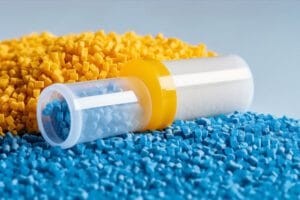In order to compete with other general-purpose resins and expand their application areas, manufacturers are constantly modifying PET engineering plastics. The modification focuses on the following areas:

a) Improvement of formability.
PET engineering plastics may crystallize rapidly at lower temperatures by selecting various nucleating agents and crystallization promoters to speed up the crystallization of PET and by selecting compatible blending components to lower the glass transition temperature (Tg).
b) Improvement of impact resistance.
The high stiffness of PET molecular chain makes its poor impact resistance. Polymer alloying techniques or blending with elastomers are common methods to improve the toughness of PET engineering plastics.
c) Hydrolysis resistance modification.
Due to the relatively high content of ester bonds in PET molecules, the hydrolysis resistance is poor and must be dried before processing, which limits the application of the products under hot and humid conditions. Since hydrogen ions catalyze the hydrolysis of ester bonds, reducing the content of carboxyl groups at the PET end is an important method to improve hydrolysis resistance.
At present, an effective and low-cost solution to the problem of PET hydrolysis is the addition of carbodiimide anti-hydrolysis agents, which effectively slow down the process of hydrolysis reaction because they can react with the end carboxyl groups in polyester materials to produce urea-based compounds without any side effects.

In addition, improving the rigidity and flame retardancy is also an important modification direction of PET engineering plastics.






